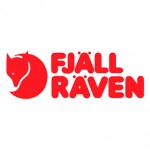Arjan's Biggest Year
In 2016 I will attempt the ultimate in global birding, to break the world record in birdwatching, this involves observing more than 6000 species in a single year!
Like my predecessor Noah Strycker I will count heard-only birds, but I will differentiate between heard-only- and seen species to make sure my list stays comparable.
During my 'Biggest Year' I will raise money for the groundbreaking Birdlife Preventing Extinctions Programme in a collaboration with Vogelbescherming Nederland and the Dutch Birding Association. This programme aims to prevent the extinction of all globally threatened bird species by applying an active, innovative and highly effective methodology.
Arjan's Biggest Year is supported by:
January 1-8
6 januari 2016 · Arjan Dwarshuis · 12219 × bekeken
January 1st 2016: GAME TIME
06:00 AM
After a night of hardly any sleep and constantly thinking and dreaming about the mammoth task at hand I woke up and said to myself: GAME TIME!
Today was on my own turf, a big day in the Netherlands, in the Dutch Delta estuary system more specifically.... I met the team 7:00 AM sharp at The Hague Central Station. Vincent van der Spek, Rinse van der Vliet, Max van Waasdijk - my travel companion for the next 2.5 months - and of course my girlfriend Camilla Dreef, an avid birdwatcher herself. The game was on!
Our first target was a difficult one, Twite. However we had remarkably little difficulty as 3 birds dropped in overhead while we were watching a mixed group of Chilean and European Flamingos in the twilights.
Next on the agenda were two other passerines that - like the Twite - normally make their home on the windswept tundra, Snow Bunting and Shore Lark. As with the Twite we immediately struck gold. While enjoying these stunning birds suddenly a huge bird swept overhead, WHITE-TAILED EAGLE!! An unexpected bonus.
Right on schedule we headed to what could possibly be my first lifer for this Biggest Year, the female Pine Bunting that had chosen the Dutch delta as its unlikely wintering ground. Within minutes of arrival I marveled at this huge Dutch rarity!
We were smashing through the delta like an elephant through a porcelain cabinet! At the bunting site we were informed about a Long-eared Owl roost in the village of Oostkapelle. The birds were quickly found and it was a real treat to see Camilla with a broad grin on her face as she photographed what is possibly our planet's most beautiful owl!
We kept our mental pace going and in quick succession we notched up quality birds like Black Guillemot, Shag, 3 species of Diver, 4 species of Grebe, Razorbill, Gannet, an unexpected wintering Whimbrel, the vulnerable Velvet Scoter and Long-tailed Duck and the notoriously difficult Green Woodpecker and Grey Partridge.
As dusk set in we enjoyed our last bird of the day: Pink-footed Goose. We tallied in at an amazing 118 species without even setting foot in a forest! A famous Dutch saying goes: 'Een goed begin is het halve werk', which means 'A good start is half the work'. Well I sure as hell hope so!
What an awesome start to this Biggest Year! Dear friends, family and sweet Camilla, I will miss you... Off to the UAE!
January 2rd 2016: DIPPOCOLIUS
After clearing customs at Dubai airport we met local birder Mike Barth for a solid day of chasing targets through the Emirates. The first target was immediately an important one, a monotypic family and a must-see for every serious world birder: Crab Plover. En route Mike - who quickly pointed out 2 stunning White-tailed Lapwings in the middle of a roundabout - told us about the difficulties for a birder living in Dubai. Because of the rapid ongoing spatial development in the Emirates the landscape changes constantly which means that a birding site could be good one day and turned into a building site the next day.
Luckily the mudflats were still there and 6 Crab Plovers were quickly found. After admiring these highly sought after black-and-white waders we did what us Dutchmen do best, scoping for waders. This meant that we could add new year ticks in quick succession.
After the wader bonanza and a quick stop for two Socotra Cormorants we headed to a small protected stretch of mangrove-forest where we enjoyed fantastic views of no less than 6 Greater Spotted Eagles circling overhead. A definite world rarity and a bird that is disappearing quickly in the western part of its range due to hybridization with Lesser Spotted Eagle.
Next we drove out into the desert where we picked up the range-restricted winter visitor Red-tailed Wheatear and the 'Halimodendra' subspecies of Lesser Whitethroat.
At 4 PM we met local birder Oscar Campbell at the Abu Dhabi golf course to hopefully pick up the also monotypic and for me most wanted Grey Hypocolius. Oscar explained to us that the birds would surely fly overhead towards their roosting site in the mangroves so I kinda thought it would be a sure thing... Boy did I think wrong...
The waiting was interrupted when I suddenly noticed a large white rumped swift flying past: PACIFIC SWIFT! The 4th record for the UAE! Oscar went bananas. Why does this happen here and never back home in the Netherlands (I also found the first Laughing Gull for the Gambia about a decade ago)?
After a long wait Oscar picked up a group of passerines that were surely Hypocolius, but as soon as I got my bins on the very distant flock they disappeared behind the tribune of the Abu Dhabi race track. SHIT! All I had seen was a compact flock of long tailed birds with rounded wings, just not good enough for a tick, but you can bag to differ. Anyways it will not go on the list. So I opted for the new name Dippocolius.
January 3rd DESERT DOWNPOURS
Last night Mike had dropped us off at Laurent Frangies' place. A good friend of mine that I knew from uni and who now lives in Dubai!
At 5:30 AM we left Laurent's place in his prized possession, a Toyota GX.R. To get into a winning mode we put on my playlist of 'glam rock' music and as we drove off into the desert Europe's 'Rock the Night' blazed through the speakers.
At dawn we arrived at Wadi Masafi. A nice quiet gorge in the mountain range east of Dubai. The walk through the wadi was great and produced the range-restricted Plain Leaf Warbler, Scrub Warblers, lots of Desert Larks and Hume's Wheatear and another Red-tailed Wheatear. While enjoying these desert specialties dark thunderclouds packed over our heads and as we drove towards the coast we soon found ourselves in a tropical downpour, in the middle of the desert!
We decided to shelter at a local restaurant right at the beach and while Laurent enjoyed his well-deserved coffee we scoped the sea. Not a bad decision as we soon found several Persian Shearwaters foraging offshore! An unexpected bonus and lifer!
As we drove further south along the coast we checked for flocks of gulls and terns and after doing so for half an hour we hit the Jackpot, a huge flock of terns and gulls right on the beach!
We counted no less than 7 different species of tern and 5 species of gull! Among them a fantastic White-cheeked tern that allowed Max some great photo opportunities. In addition to this we had close-up views of a Saunders Tern, only reliable here as the very similar Little Tern does not occur this time of the year in the UAE.
We had a plane to catch so we drove back towards Dubai, but not before a toilet break materialized into an unexpected pair of Black-crowned Sparrow-lark!
We said goodbye to Laurent and so is the first short leg of this Biggest Year completed, off to Sri Lanka!!
January 4th THE JUICE IS WORTH THE SQUEEZE
When on a Biggest Year you can't afford to 'chill' since the clock is constantly ticking and you need to be constantly ticking. So after a delayed 4 hour flight to Colombo - Sri Lanka - and another 4 hours by minivan we arrived at Sinharaja right at the crack of dawn! What a change of scene, yesterday afternoon we were birding in the desert, now we found ourselves in hot steaming lowland forest!
I've never had a warmer welcome anywhere than here in Sri Lanka, Jetwing Ecoholidays had provided us with our own minivan and driver, a very knowledgeable and friendly guide Shantha and a gift bag containing an illustrated checklist, the birdguide for Sri Lanka and a Hawaii-shirt with birds on it! What an ospious start to my Biggest Year!
Soon we found ourselves on the Sinharaja trail system chasing endemics. The trick in Sinharaja is to find that mega mixed feeding-flock, but as the morning ticked away and the sun began to burn we failed to do so... We were just starting to worry when the game-changer came. A loud 'Pjong!' echoed through the forest, our guide froze and esthetically whispered 'Green-billed Coucal'! Seconds later we marveled at the beast that produced this bizarre call, we were back in the game!
We had found a Spot-winged Thrush, Malabar Trogon and a very tame flock of the radiant Ceylon Blue Magpie, but still no feeding flock... Than it happened, the typical sound of a feeding flock rose in the distance and the first birds started dropping in overhead. Moments later we were surrounded by birds: another Green-billed Coucal, Blue Magpies, the rare Ashy-headed Laughingthrush, a pair of Crimson-baked Flamebacks and many Orange-billed and Sri Lankan Scimitar-Babblers, fantastic!
We had just finished our very tasty lunch when Shantha urged us to go back to the van. To our surprise we didn't drove down, but back up again to where we had come from. Turned out one of the local guides had found a roosting Serendip Scops Owl, an endangered bird described new to science only as recent as 2004! We enjoyed reasonable views as the bird remained well hidden in a vine tangle, but any more movement from our side would surely disturb this threatened species, so we refrained from going any closer.
What a day! We walked back to the van, but Shantha had one more surprise for us up his sleeve, a fantastic pair of Ceylon Frogmouth!
Now completely satisfied and completely exhausted we fell asleep in the back of the van during the 6 hour drive towards the Horton Plains...
January 5th HORTON PLAINS POWER PLAY
The alarm rang at 04:30 AM, a bit of a petty since we were staying at the very luxurious Jetwing St. Andrews Hotel and we had no time to enjoy this fantastic place - sponsored to us by Jetwing Ecoholidays - during day-time. However, we were here on a mission to notch-up all the Sri Lanka endemics in just a couple of days, so resting would have to come some other time.
We reached the gates of Horton Plains NP still in the twilight, but already there was a huge assemblage of minivans filled with eager tourist wanting to reach 'The World's End' lookout point in time to see the sunrise. We however had a very different reason to be here so early, namely the shy and endangered Ceylon Whistling-thrush.
The Whistling-thrush-site was a scenic one, a small lily-covered pond near a stream surrounded by cloud-forest-covered hillsides, not a bad place to start off the day! We were there for barely 5 minutes when I flushed a bird from the roadside, the blue shine on its back was unmistakable and I whispered 'Whistling-Thrush'! Luckily the bird perched for a few seconds, allowing excellent views of this world-rarity!
After this flying start we kept the pace going and saw all the possible high-elevation endemics before 12 AM, however we still needed two highly sought-after winter migrants, Kashmir Flycatcher and the beautiful Pied Thrush. There was one small problem, we arrived at Victoria Park at midday, which made conditions for birding tough.
Still we managed to obtain fantastic views of no less than 3 Pied Thrushes and a vagrant Eyebrowed Thrush behind a small toilet building. The flycatcher proved elusive today and despite 2,5 hours of intensive searching we just could not find it, the first real dip for our Sri Lanka trip was a fact.
From the Horton Plains it was another 6 hours drive to the Jetwing Yala Hotel, which meant that the last hour automatically turned into a night drive. This materialized in a sighting of a Jungle Cat in the middle of the road, a fantastic finish and the missed flycatcher was quickly forgotten!
January 6th BACK TO SINHARAJA
A now familiar pre-dawn start meant that we arrived at Bungala National Park just as the sun rose over this beautiful wetland. As expected new birds came thick-and-fast and in addition to large numbers of waders and egrets we found several good species like Watercock, Spot-billed Pelican and Pallas's Grasshopper Warbler. I would have loved to spend more time in this lush wetland, but we had to leave early since there were still a couple of endemics lurking somewhere in the mountains of Sri Lanka...
So after another 5 hour drive we were back were we had started, Sinharaja! This time with a very specific hit-list. First on this list was the Sri Lankan Thrush, a shy and rare Zoothera thrush that is notoriously difficult to find. Luck was on our side however, since it was dripping wet after a recent tropical downpour; ideal conditions for ground dwelling thrushes looking for tasty worms and snails! Soon a Thrush was flushed from the trail and perched for more than 10 minutes at eye-level, awesome!
On the way back we had two close encounters with another endemic Zoothera, Spot-winged Thrush and our local guide pointed a second Serendip Scops Owl out for us, nice! This one allowed for better photo-opportunities than the one on the first day.
Near the entrance we made short business of another target, White-faced Starling and moments later two Sri Lanka Grey Hornbills flew in! Now there were just two endemics left for us to find at Sinharaja!
We spend the night in the lovely Martin's Lodge, just a stone's throw away from the Sinharaja gate and just as the sun set over the Sri Lankan mountains a Chestnut-backed Owlet began to call, one more endemic to go...
January 7th ENDEMICS, GONNA CATCH 'M ALL!
Today we were going after a notoriously shy gamebird, the Sri Lankan spurfowl. Well it used to be a challenging bird to come to grips with, but recently a stake-out had been found at the edge of the lower part of Sinharaja. A local community has started feeding the birds and every day around 9 AM this beautiful white-spotted bird creeps out of the forest to forage on seeds behind one of the houses. This is a great way to involve a local community in conservation practices, since they earn good money from visiting birders that hope to see the spurfowl, these people are strongly motivated to protect it. Initiatives like this are now set up all over the world and are beneficial to both birders, local people and most importantly birds!
While we were waiting for this elusive skulker there was a lot of action in the lush rainforest surrounding the small village and to our big surprise we soon enjoyed fantastic views of both Green-billed Coucal and Red-faced Malkoha! Even rarer was a flock of 4 White-faced Starlings scoped in a distant tree.
While enjoying a fantastic Chestnut-backed Owlet one of the elders came rushing in urging us to come with him and there it was, our last wet-zone endemic, Sri Lanka Spurfowl, what a stunning bird!
After the Sinharja clean-up we drove down to the coast to find another target, this time not an endemic, but nevertheless a bird that I had been longing to see for quite some time now, Indian Pitta, hypothetically my 10th species in this most stunning of the worlds' bird families. And yes, Buddha was again good to us and we managed to find no less than 3 birds at a forest stakeout! Now we had one more day in Sri Lanka to hopefully find our final endemic, Sri Lanka Wood-shrike, a dry-zone specialist.
I didn't expect this Sri Lanka trip to go this smooth and in retrospect I could have even done it in 4 days, well it was the first country that I had properly planned when constructing my Biggest Year itinerary (back than there were 'only' 23 countries in the itinerary, now there are 41), so I guess I have to give myself some slag. For everybody out there doubting whether I will be able to combine hardcore birding, making a documentary movie, blogging and fundraising simultaneously - read Leon - I love this and trust me, I will only step up my game from now on. I would like to stress one more time that with this Biggest Year I hope to raise awareness and funding for the Preventing Extinctions Programme, so to everybody reading and enjoying this blog, please do have a look at my Tilt fundraising page!
January 8th GOODBYE BEAUTIFUL SRI LANKA
Last night we had a fantastic dinner at the Jetwing Beach Resort with Keith Wijesuriya and his wife. Keith is the guy who invited me to come to Sri Lanka and arranged this fantastic trip sponsored by Jetwing Eco Holidays. After elaborating on the fantastic trip we had so far we suddenly noticed it was already 11 PM and since we woke at 4:30 AM I felt a bit shaky today, but as soon as I got my bins on a magnificent Brown Fish Owl - at a wetland reserve north of Colombo - I was back in business!
We thoroughly enjoyed our final day on this lush island and managed to find the last of the endemics, Sri Lanka Woodshrike, a recent addition to the Sri Lanka list! We also saw the local red-backed subspecies of Black-rumped Flameback that will surely get split in the near future.
We returned to the resort around lunchtime since I had an interview this afternoon with three journalist of three different Sri Lankan newspapers! Fantastic exposure for my trip and for my fundraiser so I was more than happy to do so (we had seen all the endemics anyhow).
After the interview we had a couple of hours before our flight to India, so this gave me plenty time to finish-up this blog, enjoy!
We will leave for India with 342 species in 8 days' time, not bad I would say.
Arjan Dwarshuis
FOLLOW ARJAN'S SPECIES LIST AND TWEETS HERE
Discussie
Gebruikers van het forum gaan akkoord met de forumregels.






































